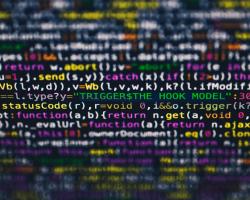Siting Experience Documents Only
Country
Keywords
Joint Convention on the Safety of Spent Fuel Management and on the Safety of Radioactive Waste Management, 4th Finnish National Report as referred to in Article 32 of the Convention
Joint Convention on the Safety of Spent Fuel Management and on the Safety of Radioactive Waste Management, 4th Finnish National Report as referred to in Article 32 of the Convention
This is the Finnish National Report, in accordance with the provisions of the Article 32 of the Joint Convention, to the 4th Review Meeting of the Contracting Parties in May 2012. The aim of this report is to present the recent developments of waste management in Finland, to describe waste management facilities and practices in Finland and, for discussion and review among contracting parties, to describe how the obligations under the Convention are fulfilled in Finland.
Joint Convention on the Safety of Spent Fuel Management and on the Safety of Radioactive Waste Management, 3rd Finnish National Report as referred to in Article 32 of the Convention
Joint Convention on the Safety of Spent Fuel Management and on the Safety of Radioactive Waste Management, 3rd Finnish National Report as referred to in Article 32 of the Convention
The Joint Convention on the Safety of Spent Fuel Management and on the Safety of Radioactive Waste Management was adopted on 29 September 1997 in the Vienna Diplomatic Conference. Finland signed the Convention on 2 October 1997 and deposited the tools of acceptance on 10 February 2000. The Convention entered into force on 18 June 2001. The fulfillment of the obligations of the Convention and the developments after the second Review Meeting are assessed in this report.
Impact of Nuclear Information on Young People's Knowledge and Attitudes: Methods/Participatory tools in an Educational Program WP1
Impact of Nuclear Information on Young People's Knowledge and Attitudes: Methods/Participatory tools in an Educational Program WP1
Despite in Romania nuclear research activities were started in early 50s, the nuclear power is very young. First NPP, Cernavoda Unit 1, about 600 MWe, was in operation since 1996. Next unit (Cernavoda Unit2) will be in operation at the end of 2007. Therefore, a relative low amount of high level waste was produced. However, some problems already exists in Romania, mainly related to historical radioactive wastes released by nuclear industry and research.
Geological Challenges in Radioactive Waste Isolation
Geological Challenges in Radioactive Waste Isolation
Over the past forty years, the development of the technology needed to isolate radioactive waste in underground rock systems has been found to be a formidable problem. This is especially the case in connection with high-level waste (HLW) after its removal from operations in nuclear power plants. There is also the additional problem of isolating low- and intermediate-level waste (LILW).
Geological Challenges in Radioactive Waste Isolation Third Worldwide Review
Geological Challenges in Radioactive Waste Isolation Third Worldwide Review
The first worldwide review of geological problems in radioactive waste isolation was published by the Ernest Orlando Lawrence Berkeley National Laboratory (Berkeley Lab) in 1991 (Witherspoon, 1991). This review was a compilation of reports that had been submitted to a workshop held in conjunction with the 28th International Geological Congress that took place July 9Ð19, 1989, in Washington, D.C.
10-year Record of Learning Factual List of Activities and Investigated Topics, and of People Who Contributed to Them
The Partnership Approach to Siting and Developing Radioactive Waste Management Facilities
The Partnership Approach to Siting and Developing Radioactive Waste Management Facilities
History shows that the search for sites for radioactive waste management facilities has been marred by conflicts and delays. Affected communities have often objected that their concerns and interests were not addressed. In response, institutions have progressively turned away from the traditional “decide, announce and defend” model, and are learning to “engage, interact and co-operate”. This shift has fostered the emergence of partnerships between the proponent of the facility and the potential host community, as shown in a recent NEA study.
From Information and Consultation to Citizen Influence and Power: 10-year Evolution in Public Involvement in Radioactive Waste Management
Identifying remaining socio-technical challenges at the national level: Slovenia
Identifying remaining socio-technical challenges at the national level: Slovenia
The use of nuclear energy has a strong tradition in Slovenia. In 1949 the Institute Josef Stefan was founded, devoted to research in physics, with great emphasis on nuclear physics. A few years later (1966) the research nuclear reactor TRIGA started to work in the vicinity of capital city Ljubljana, to support its research.
LEARNING AND ADAPTING TO SOCIETAL REQUIREMENTS
LEARNING AND ADAPTING TO SOCIETAL REQUIREMENTS
Reflections on Siting Approaches for Radioactive Waste Facilities: Synthesising Principles Based on International Learning
Radioactive Waste Management and Decommissioning in Finland
Radioactive Waste Management and Decommissioning in Finland
OECD/NEA: Finland
OECD/NEA: Finland
Stakeholder Dialogue: Experience and Analysis
Stakeholder Dialogue: Experience and Analysis
The report begins with a consideration of the factors which have led to a growth in the use of dialogue processes, a clarification of key concepts and a classification of dialogue processes. A description of recent and current activities in Europe and North America is followed by discussion of the relationship of processes and contexts. This then leads to an identification of the key aims and evaluation criteria which will be used in the design of dialogue processes to be conducted in subsequent phases of the project.
Identifying remaining socio-technical challenges at the national level: Finland
Identifying remaining socio-technical challenges at the national level: Finland
This research report is part of the research programme International Socio-Technical Challenges for Implementing Geological Disposal (InSOTEC; see www.insotec.eu). The research programme is funded by the Seventh Framework Programme Theme [Fission-2010-1.1.2] [Research activities in support of implementation of geological disposal] (Grant agreement no: 269906).
Finland Decision in Principle Concerning Posiva Oy's Application for the Construction of a Final Disposal Facility for Spent Nuclear Fuel
Finland Decision in Principle Concerning Posiva Oy's Application for the Construction of a Final Disposal Facility for Spent Nuclear Fuel
The decision in principle by the Government on 21 December 2000 concerning Posiva Oy's application for the construction of a final disposal facility for spent nuclear fuel produced in Finland.
Other Countries Provide Lessons for US in Managing Used Nuclear Fuel
Other Countries Provide Lessons for US in Managing Used Nuclear Fuel
News item from NEI summarizing siting process for nuclear waste repositories in Sweden, Finland and France.
Final Disposal of Spent Nuclear Fuel in Finnish Bedrock - Romuvaara Site Report
Final Disposal of Spent Nuclear Fuel in Finnish Bedrock - Romuvaara Site Report
Posiva Oy is studying the Finnish bedrock for the geological disposal of spent nuclear fuel. The study is based on the site selection research programme started originally in 1983. The programme is in accordance with the decision in principle by the Council of State in 1983 and aims at the selection of one site in 2000. Four sites, Hastholmen in Loviisa, Kivetty in Aanekoski, Olkiluoto in Eurajoki and Romuvaara in Kuhmo, have been studied in detail. This report summarises the results of the site investigations carried out at Romuvaara.
The Final Disposal Facility for Spent Nuclear Fuel
The Final Disposal Facility for Spent Nuclear Fuel
Thorough long-term studies have shown that the Finnish bedrock is suitable for the permanent isolation of spent nuclear fuel from organic nature. Legislation requires that besides safety, an assessment be made of any other environmental impacts of the final disposal facility. Environmental impact assessment (EIA) in respect of the final disposal facility for spent nuclear fuel got under way in 1997 when Posiva Oy, which is responsible for the project, began work on an EIA programme.
Final Disposal of Spent Nuclear Fuel in Finnish Bedrock - Kivetty Site Report
Final Disposal of Spent Nuclear Fuel in Finnish Bedrock - Kivetty Site Report
Posiva Oy is studying the Finnish bedrock for the geological disposal of spent nuclear fuel. The study is based on the site selection research programme started originally in 1983. The programme is in accordance with the decision in principle by the Council of State in 1983 and aims at the selection of one site in 2000. Four sites, Hastholmen in Loviisa, Kivetty in Aanekoski, Olkiluoto in Eurajoki and Romuvaara in Kuhmo, have been studied in detail. This report summarises the results of the site investigations carried out at Kivetty.
Final Disposal of Spent Nuclear Fuel in Finnish Bedrock - Olkiluoto Site Report
Final Disposal of Spent Nuclear Fuel in Finnish Bedrock - Olkiluoto Site Report
Posiva Oy is studying the Finnish bedrock for the geological disposal of spent nuclear fuel. The study is based on the site selection research programme started originally in 1983. The programme is in accordance with the decision in principle by the Council of State in 1983 and aims at the selection of one site in 2000. Four sites, Hastholmen in Loviisa, Kivetty in Aanekoski, Olkiluoto in Eurajoki and Romuvaara in Kuhmo, have been studied in detail. This report summarises the results of the site investigations carried out at Olkiluoto.
Expansion of the Repository for Spent Nuclear Fuel: Environmental Impact Assessment Report
Expansion of the Repository for Spent Nuclear Fuel: Environmental Impact Assessment Report
Safety Case Plan
Safety Case Plan
Following the guidelines set forth by the Ministry of Trade and Industry (now Ministry of Employment and Economy) Posiva is preparing to submit the construction license application for a spent fuel repository by the end of the year 2012. The long-term safety section supporting the license application is based on a safety case, which, according to the internationally adopted definition, is a compilation of the evidence, analyses and arguments that quantify and substantiate the safety and the level of expert confidence in the safety of the planned repository.


